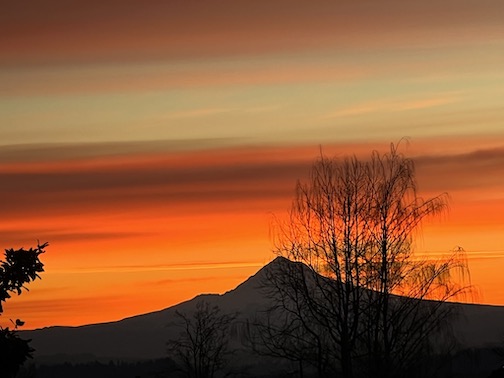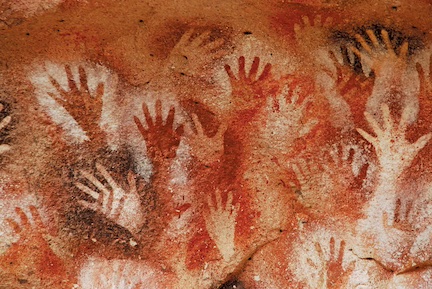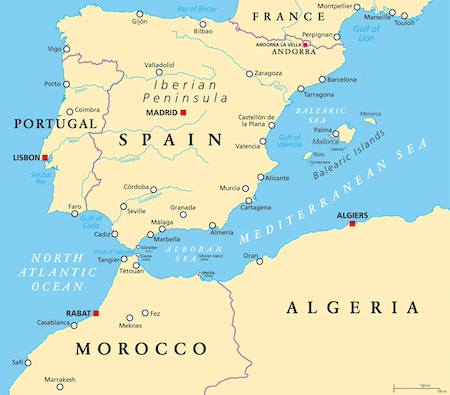Life begins the moment you realize you’re having fun with the people around you.
If the people are scientists of varying disciplines, life origin is based on solid theories.
It’s a whole ‘nother story with anyone else.
What if it’s some random blogger?
I didn’t break the evolution code with a liberal arts degree, but reading history is a good start.
That’s where you discover whether you like learning, or just passing the test.
Those who discover they like the learning process apply the same process to more topics, like the evolution of life on earth.
What did my deep dive come up with?
The swirling mass of goo and mineral rich waters spewing from undersea volcanos came to the surface of the planet to face the unstable atmosphere.
(Out here in the west we’re on constant alert for lightning strikes starting forest fires. So we’re used to lightning, okay?)
Lightning flashes across the skies, some strike the waters.
One water strike, maybe two, hit the jackpot and sparked the goo into a replicating single cell organism of blue-green algae.
Over the course of billions and billions of years this process played out over and over.
A life form grows in perfect condition, then dies. Over and over it went until conditions improved enough for a longer life span.
Then, before you know it, here we are figuring it all out.
And it’s vaguely scientific, which still matters in some circles.
Life begins with a sustainable environment; life ends with an unsustainable environment.
Or it changes just in time.
New Creation Myths
Tracking the origins of life is more a detective story than creation myth.
Ask a simple question and suddenly some yahoo starts explaining the Big Bang Theory of the Universe.
The Origins Story needs simplification, which is why I like the possibility of ocean scum and lightning coming together to create blue-green algae.
It’s close enough, unless you’re uncomfortable thinking you came from broccoli.
Closer to home we have another origin of life problem.
Over millions and millions of years the earth has cycled through one ice-age after another.
Oregon shows evidence in the Columbia Gorge.
About 40 Missoula floods — the planet’s largest known floods during the last two million years — generated water flows 10 times the total flow of all Earth’s rivers.
The indigenous people, people of the oral tradition and not written language, must have told some whoppers to the young folks.
About 15,000 years ago, in the waning millennia of the Ice Age, a vast lake known as Glacial Lake Missoula suddenly burst through the ice dam that plugged it at one end.
In the space of just 48 hours, geologists believe, the collapse sent 500 cubic miles of water cascading across the Pacific Northwest, creating overnight such unusual landscapes as the scablands of eastern Washington.
Were there people here 15,000 years ago?
All signs point to yes.
Did any of them know how to swim?
Those Damn Ice Dams
Did other places in the world have floods similar to the Missoula Floods in the Pacific Northwest?
The Black Sea looks like a prime location.
Ten thousand years ago, the Black Sea was an overflowing, fresh water lake. Then, during an especially arid period, its evaporation exceeded input, so that its level gradually lowered more than 100 meters.
Ancient shorelines show that it was a much smaller lake, occupying only the deep, southern basin of the Black Sea. Meanwhile, global sea level was rising.
About 7500 years ago, it overtopped the Bosphorus and the ocean suddenly flowed into the sea, filling the deep basin and flooding over the broad shelves to the north.
This event may have been the basis for the flood story found in ancient Phoenician writings and in the Gilgamesh epic, which in turn were precursors of the biblical story of Noah’s flood.
In the top pic you can see the Mediterranean Sea on the bottom left, the Black Sea in the top right, and the land bridge at Istanbul.
Land bridge to ice dam is not a big stretch.
If that’s not too big, take a look at the mouth of the Mediterranean at the Strait of Gibraltar.
All it took to get started was a trickle. Researchers have found evidence that the Atlantic Ocean refilled the dried-out Mediterranean basin about 5.3 million years ago in a gigantic flood, which started slowly but accomplished most of the task within as little as several months.
Today, the crystal-blue waters of the Mediterranean Sea cover some 2.5 million square kilometers.
But 5.3 million years ago, that same area was a desert peppered by extremely salty lakes with depths down to 2.7 kilometers below current sea level. The sea’s waters had evaporated about 300,000 years earlier, when the Mediterranean’s only inlet at the time, the Strait of Gibraltar, blocked the flow of seawater from the Atlantic Ocean.
Earlier research had suggested that a major ice age had caused sea levels to drop, exposing a land bridge between Europe and Africa.
Big ice dam breaks, floods everything.
It’s a common story not told often enough:
East Coast ice dam.
Near the end of the last Ice Age 8,000 years ago, an ice dam on North America’s east coast broke, releasing a torrent of fresh water seven times more voluminous than all the Great Lakes combined.
It all rushed into the Atlantic Ocean over the course of only a few months.
Mountain Ice Dams.
Carbon dating shows the most recent lake, about 780 feet deep, burst through the ice dam between 1,100 and 1,400 years ago, rapidly draining some 50 cubic miles of water. The second lake, more than 2,200 feet deep, dates from about 10,000 years ago, and likely held more than 500 cubic miles of water.
When that ice dam broke, it caused one of the greatest floods on Earth since the last ice age.
Worldwide Floods
All known terrestrial floods with discharges greater than 500,000 m3/s resulted from rapid release of water stored behind natural dams or within glaciers.
During the Quaternary period, blockage of large river systems by continental ice sheets has been a primary source of landscape-shaping floods.
These floods include the 17 million m3/s Missoula floods along the Cordilleran Ice Sheet margin in western North America, giant floods along the margins of the Lauren-tide Ice Sheet in eastern and central North America, and more recently discovered giant Pleistocene epoch floods in central Asia.






